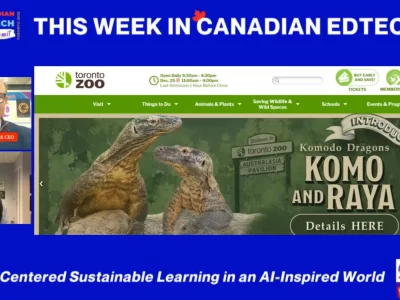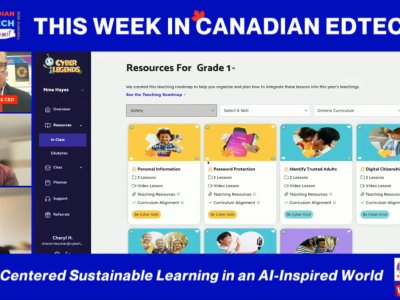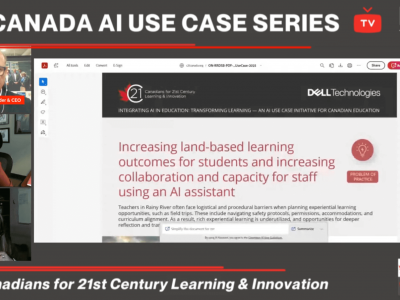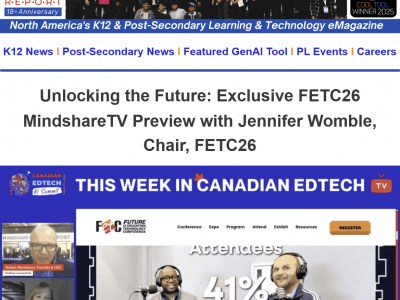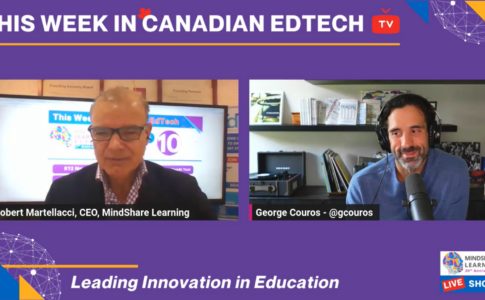This month in the Youth File, I’d like to share an interview conducted via email with Marc Kielburger with a focus on technology, youth empowerment and how teachers can help guide students to live an inspired life, instep in the world of social change.
Marc is a Canadian author, speaker, humanitarian and activist for children’s rights. He and his brother Craig Kielburger co-founded Free The Children, an international development and youth empowerment organization.
Marc spoke at the Toronto District School Board’s Social Justice Fair inspiring our team to get in touch with him to answer a few questions. Here’s what transpired:
1. When you talk to school kids at the age you were when you first became a social activist for human rights, do you see differences in the kids now than when you were the same age especially because they’re deeply connected to the world via the Internet?
Youth today have an incredible opportunity to access an entire network and world of knowledge available at their fingertips. A few years ago, students were only able to connect others who shared similar passions in their local schools or community. Through Free The Children, an entire support network has been created for students to share ideas and stories from all around the world. Social networking allows Free The Children and Me to We to reach thousands of students each day – within minutes. We share updates about the amazing work young people are doing around the world and keep them motivated through fundraising tips and inspirational stories.
2. What do you wish teacher’s knew about kids in their classrooms?
Students have some of the most imaginative and driven minds out there. Many teachers definitely know this, but I wish more would recognize the unique perspectives kids have. When faced with a challenge, students will respond with some of the most amazing solutions and rarely give up until a solution has been discovered. Each student is unique, so we recommend a simple equation: gift + issue = change. Students have unlimited potential when they match their passion – sports, baking, singing, writing, etc – with an issue they are passionate about, It may be homelessness, education, animal rights, or anything they want to take action on. When students realize that fundraising and awareness building can be much more than just selling chocolate bars door to door, they will take action like never before.
3. What can teachers do to help students learn about the value of contributing everyday actions to better their local community and society? And what’s the most important role a teacher has?
Often, adults will hide or shield youth away from social issues and ask them to hold off until they are older to tackle social issues. Because of this attitude kids often become “adults-in-waiting.” Yet every day we see the power and potential in many young people who prove this perception is completely untrue. Educators have the important role of encouraging students to get out there and take action in their local and global community. That’s why Free The Children works with educators to supply classroom resources, fundraising kits and a team of youth programming coordinator to support them. By engaging students from a young age, educators can build their confidence and elicit a lifetime of social action, creating an entire generation of socially-conscious, global citizens.
4. Do you think that community service or social activism should become part of the curriculum?
It’s time to re-evaluate the 3 R’s (reading, writing and arithmetic) in our education system. I believe we need to add a fourth pillar of social activism. Just as important as joining a sports team or learning to play an instrument, changing the world should be a part of becoming a well rounded student. Free The Children does this through a few programs we offer educators and students. Global Voices is a national article written by Craig and myself which focuses on a different social issue each week. Accompanying the article is a free in-class curriculum that teachers can apply to their lesson plans.
“We Schools in Action” is an overarching year long program that brings We Day and other Free The Children initiatives into the classroom. It provides educators with a free curriculum, classroom resources and professional development training. The program heavily encourages youth-led campaigns in the classroom and the development of student leadership and action planning skills.
By bringing social action into the classroom – students across Canada have raised over 217,000 pounds of food to for local food banks through Free The Children’s Halloween for Hunger campaign and over one million volunteer hours were logged by youth at local charities and non-profit organizations.
5. As the director of a school board what would you do with technology implementation into school board initiatives?
Technology opens the doors for students to express themselves in many ways. Through video, photography, graphic design and social networking, students have much larger scope to convey their message. At Free The Children, we see students use media as a way to express their passion for a particular issue. During our “Vow of Silence” campaign, students from around the world photographed themselves with their mouths covered, expressing solidarity withal the children in the world who have no voice. The Vow of Silence also encourages students to shut down all forms of communication – no Facebook, Twitter, or texting – to experience the full feeling of no personal expression.
Through the Adobe Youth Voices program, students are provided the opportunity to express their passions and ideas to change the world through mixed media projects. Not all youth are comfortable standing up and speaking in front of their peers. Through mixed media, students have an alternative voice. It would be amazing for all students to have the tools they need to increase their potential to create social change.
6. How are you using social networking to energize and activate the “Me to We” community?
Free The Children uses social networking as a platform to get our immediate message out to our supporters, and to build relationships between our Free The Children staff and our youth networks around the world. We were thrilled to be able to link our overseas country projects to social media such as Twitter.
Right now, youth around the world can follow our country director in Kenya (twitter.com/robininkenya) and receive immediate updates about the progress of Free The Children projects they support. Facebook and Twitter also allow my brother Craig to keep our Free The Children and Me to We network updated on his travels and exciting news from the field. Our We Day Facebook page currently has over 600,000 “likes”. It’s a great forum to communicate exciting updates, stories and opportunities to our network, and allow us to share great videos and photos as well.
Social media has enhanced Free The Children and Me to We’s ability to let young people know they are not powerless in making a difference in their world.

